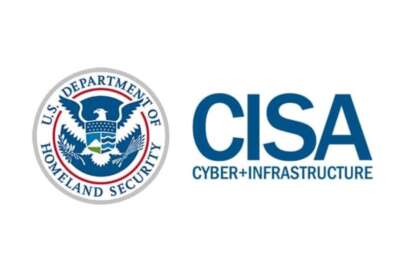
Insight by Verizon
How will the Navy ensure network service to the tactical edge? By prioritizing software, treating hardware as disposable
The sea services want to move to a software-defined environment that will let them deliver capabilities at the edge as needed. To do that, they intend to move to a...
As part of a decade-long reform effort that the Marine Corps launched two years ago, the service is trying to make itself lighter, more adaptable and more expeditionary. And it’ll need an IT infrastructure in line with that broader vision, called Force Design 2030.
If the Marines are going to pull it off, the current thinking is they’re will move in fairly short order to a new way of designing and implementing network technology — one which allows the hardware to become an interchangeable, expendable commodity, while all the real work is done in software.
Much of that work falls to Task Force Aquila, an organization the corps stood up specifically to plan and implement changes to the Marine Corps Enterprise Network, particularly ones that’ll have implications for units that will need connectivity at the tactical edge.
A big part of the task force’s work up to now, in partnership with labs across the Department of the Navy (DoN), has been to model and simulate how certain pieces of network infrastructure and design choices would behave under various conditions. But those simulations have some big constraints: It’s tough to test the hardware you would use in a theoretical scenario when you don’t have a digital model of how that hardware would behave in the real world.
Marine Corps leans into software-defined networking
That’s one big reason the Marines want to move toward software-defined networking and infrastructure as code as quickly as possible.
“All of our infrastructure right now is purpose-built hardware. You’ve got one piece of hardware that’s a router, another one that’s a firewall, another one that’s a switch,” said Keegan Mills, Task Force Aquila’s acting director. “What we need in the future is agnostic hardware whose function is defined by a piece of code. The vision is the code could be written on the fly — and in a very sci-fi world that looks like artificial intelligence — you’d have a network that is constructed for a very specific purpose that may only exist for a very short period of time.”
In theory, not only could those elements of network infrastructure be quickly constructed and then vaporized depending on actual battlefield needs, but using an architecture that works along those fundamental lines would make the modeling work the task force is doing right now a whole lot easier.
Will the digital twins concept eventually take hold?
For a while, a few years ago, the Navy and Marine Corps saw a huge amount of promise in the concept of digital twins — the idea that systems could be designed based on accurate digital models of how individual components’ physical counterparts work in the real world.
But it turned out that even when sea services are working with purely IT systems, the digital twin idea doesn’t work as well as envisioned — at least not yet.
“The term isn’t used as much now as it was a year ago. And one of the reasons is it’s like an onion: You start peeling back the skin and just layers of complexity, and we’ve kind of hit the limits of the technology that we have available to us,” Keegan said. “It’s my personal belief that to have a meaningful digital twin, we really need to have code-defined infrastructure. We’ll make [the twin strategy] more useful when we have code-defined infrastructure.”
Thinking about naval networks as pieces of code instead of specific cables connected to specific boxes opens up a lot of other possibilities, including when it comes to how the sea services secure their information, said Jane Rathbun, DoN chief technology officer.
“We want to shrink the attack surface and not necessarily have all of these networks defined based on the classification of the data that’s going to ride on them,” she said. “Instead, I can differentiate the risk of the loss of data from the environment. We also have to be thinking about the amount of money we should be spending on IT, and it certainly isn’t true that we should create a physical network for every use case. We have to get away from that thinking and move to this kind of idea.”
Standing up software-defined networks when and where needed
In fact, the broader department has already started to do some of that work, at least on a conceptual basis.
The Marine Corps argues it’s already done most of the work of collapsing the preponderance of its IT infrastructure into a single construct called the Marine Corps Enterprise Network (MCEN), even if it’s not literally true that every single piece of the network is interoperable and cohesive.
The DoN is trying to embrace that way of thinking, for at least the near term, too. That’s a departure from as recently as two years ago, when the department’s goal was to use the latest competition of its Next-Generation Enterprise Network (NGEN) contract to collapse its overseas and U.S.-based networks into one.
Instead, the current idea is to let the existing menu of naval networks operate as they do today but pay much more attention to practices that would let those networks be managed as a single “logical” network.
The name for that tall order is LUNA, short for Logical Unified Network Architecture. It aims to tie together the various connections between the Navy’s U.S.-focused Navy-Marine Corps Intranet, its overseas OneNET, its Consolidated Afloat Networks and Enterprise Services (CANES) networks and MCEN, into a single, manageable design concept.
“The Navy has a certain view of its networks: That there’s a geographic boundary and a functional boundary that it never exceeds, and it only has to do things in that environment,” said Chris Morris, who’s helping to lead the LUNA effort from the DoN CIO’s office. “The Marines have a different idea about their network, which is that we’re going to train and recruit, and build, run and fight on the same network all the time. But we’re a naval enterprise, and fleet Marines have to get on ships.”
Determining cross-network functionality all the way to the edge
The challenges, Morris said, are mostly around discerning how much commonality currently exists between the networks, what commonality needs to be created and the extent to which each element really matters to the bigger naval enterprise.
“LUNA is not a call to action to collapse all networks into one. It’s a call to action to figure out how common those things can be and how common those things must be to allow the development and delivery of warfighting capabilities everywhere they’re needed in the minimal size possible,” he said. “Currently, an aircraft carrier has about 50 megabits of bandwidth while it’s underway, and that’s great compared to where they used to be. It was a couple of megabits. We also have to think about when it starts losing connectivity to the things that it needs to communicate with on shore or to remain completely quiet. Those are all the things we’re trying to express in the design concept. What has to be similar and different about all of these different networks in order to allow developers to develop and deliver capabilities to those networks that actually work?”
Copyright © 2025 Federal News Network. All rights reserved. This website is not intended for users located within the European Economic Area.





